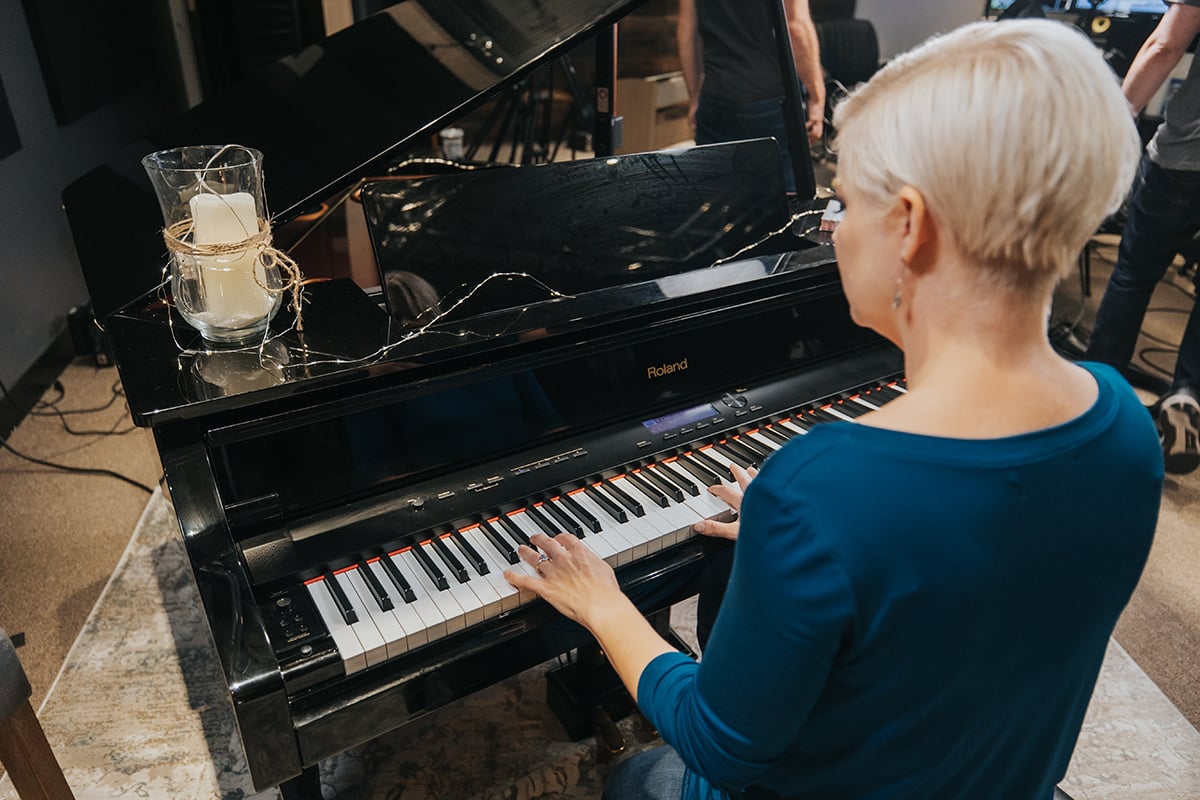Does it feel like your left hand has a mind of its own?
Or that no matter what you try, it just won’t listen to your brain telling it what to do?
Then this is the lesson for you!
Cassi has 3 tips that you can start using today that will help you play much better with both hands at the same time.
These tips will help you play songs more easily, as well as help to build your dexterity.
This is where you play something in your right hand, and then mirror it with your left hand. So if you’re playing a C scale up in your right hand, you’d play it descending with your left hand. This way the fingering will be the same for both hands.
You can use this exercise for scales, broken chords, and arpeggios. Try working up and down the keyboard playing through the different inversions.
Once you can play each hands separately, try mirroring them hands together.

For many people, our left hands are weaker. And while the right hand typically carries the melody on the piano, piano wouldn’t be the same without the left hand providing beautiful arpeggios and accompaniment patterns. Your left hand deserves more love, so check out the De-stupefy Your Left Hand course to give it the attention it needs! Free with your Pianote membership.
CHECK IT OUTThis exercise is fantastic to use BEFORE practicing a piece of music hands together.
Picture this – you can play the left-hand part on its own really well. You can play the right-hand part on its own really well. But when you try and play them together your left-hand falls apart.
This is the in-between step. It involves playing the music with your left-hand and tapping the rhythm with your right. This means you only have to focus on the rhythm with the right hand, instead of the notes.
It also helps to count out loud while doing this.
That way, when you do come to play the piece with both hands, you’ll already know the rhythm.
The final exercise is great for technique practice, any exercise (like a Hanon) or for practicing songs. It’s good to use it when your left hand is sloppy and you’re having trouble keeping it under control.
Practice the left-hand part staccato – that just means really short, detached notes. It will help your brain and fingers know exactly WHEN to play, and it will help you develop muscle memory for your left hand so that when you do play the exercise or piece of music, you’ll have much more control and things will be nice and smooth.
These 3 tips can be used separately or together to really help speed up your hand independence.
Try them out, and comment below to let me know what you think!
Lisa Witt has been teaching piano for more than 20 years and in that time has helped hundreds of students learn to play the songs they love. Lisa received classical piano training through the Royal Conservatory of Music, but she has since embraced popular music and playing by ear in order to accompany herself and others. Learn more about Lisa.
/marketing/pianote/promos/april/banner-bg-m.webp)
We use cookies for traffic data and advertising. Cookie Policy »
/marketing/pianote/promos/april/banner-title.webp)